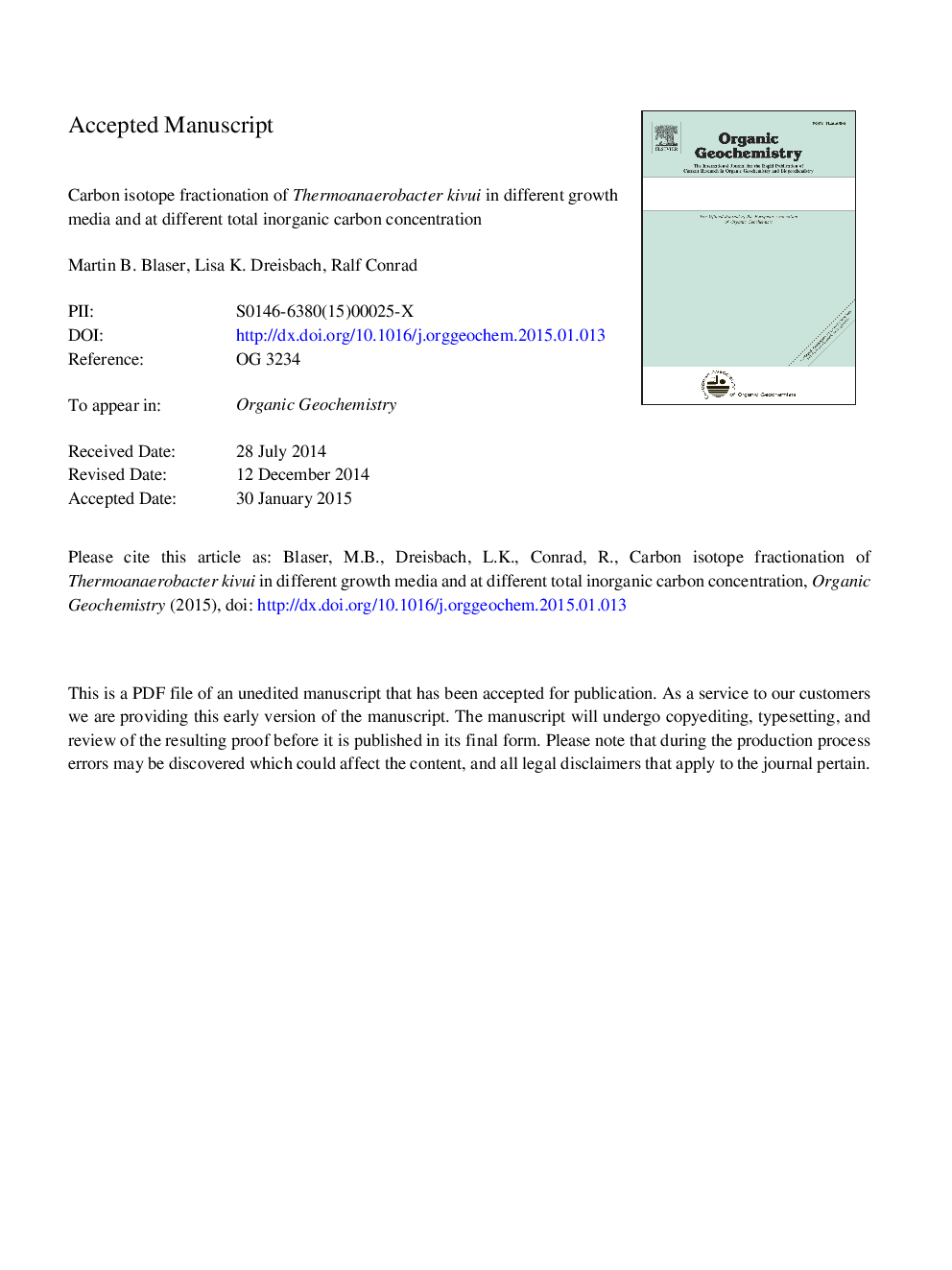| Article ID | Journal | Published Year | Pages | File Type |
|---|---|---|---|---|
| 5161728 | Organic Geochemistry | 2015 | 38 Pages |
Abstract
Chemolithotrophic homoacetogenic bacteria apparently express a characteristic stable carbon isotope fractionation and may contribute significantly to acetate production in anoxic environments. However, fractionation factors (ε) in bacterial cultures have rarely been determined and the effect of substrate availability has not been assessed. We therefore studied the kinetic carbon isotope effect in cultures of Thermoanaerobacter kivui grown at 55 °C. The fractionation factor in HCO3â buffered medium was ca. 15â° more negative than that in PO43â buffered medium. To test whether the difference was caused by the initial substrate ratio of H2 and total inorganic carbon (TIC; 0.5 in HCO3â vs. 4.0 in PO43â buffered medium), T. kivui was grown in either [3-(N-morpholino) propanesulfonic acid, MOPS] buffered or PO43â buffered media with different HCO3â concentration. Indeed, the fractionation factor became more negative with increasing HCO3â concentration and decreasing H2/TIC ratio. While pH had only a small effect, the fractionation was generally more negative in MOPS buffered than in phosphate buffered media, indicating that the buffer system also affected fractionation. Collectively, the results show that substrate availability and other environmental factors affect the magnitude of isotope fractionation during acetate production by chemolithotrophic homoacetogenesis.
Related Topics
Physical Sciences and Engineering
Chemistry
Organic Chemistry
Authors
Martin B. Blaser, Lisa K. Dreisbach, Ralf Conrad,
